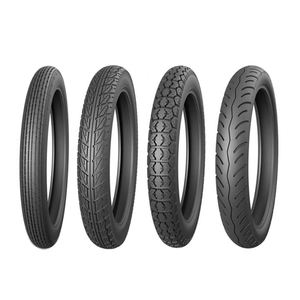The 2-Minute Rule for Motorcycle Boots
The 2-Minute Rule for Motorcycle Boots
Blog Article
Motorcycle Boots for Beginners
Table of Contents3 Simple Techniques For Motorcycle BootsMotorcycle Boots Can Be Fun For AnyoneThe Greatest Guide To Motorcycle BootsAbout Motorcycle BootsHow Motorcycle Boots can Save You Time, Stress, and Money.The Single Strategy To Use For Motorcycle Boots
Motorcycle parts and systems for a motorbike are crafted, produced, and constructed in order to generate motorbike versions with the wanted efficiency, appearances, and expense. The vital parts of modern-day bikes exist listed below. The framework of a motorcycle consists of the structure and suspension, together with the front forks, of the automobile.Carbon fibre, titanium, and magnesium are utilized in a couple of extremely costly personalized structures. The framework includes the head tube that holds the front fork - motorcycle boots and allows it to pivot. Some bikes include the engine as a load-bearing worried member; this has actually been made use of all with bike history but is currently coming to be extra typical.
It was commonly out of favor and usually pertained to as a poor idea at the time. It has actually because acquired some prestige in the contemporary custom bike world too since of the room savings it can manage and the reference to an earlier age.
Though any tank for gas might be so called, the term is usually used to component of an engine system in which the gas is kept and thrust (gas pump) or released (pressurized gas) into an engine. A motorcycle fork is the part of a motorbike that holds the front wheel and enables one to steer.
Top Guidelines Of Motorcycle Boots
The 'fork' on a bike consists of several elements. The triple trees (additionally recognized as yokes) hold the fork tubes (which include the fork springtimes), and are secured to the neck of the framework by the steering stem.

, which calls for both lubrication and adjustment for prolongation (stretch) that happens through wear. The lube is subject to being tossed off the fast-moving chain and results in gunk and dust build-up. Chains do degrade, and excessive wear on the front and back sprockets can be harmful.
Traditional roller chain-drives endure the potential for resonance, as the reliable radius of action in a chain and sprocket combination continuously alters during the change ("chordal action"). If a drive gear turns at constant RPM, then the chain (and the driven sprocket) needs to increase and slow down regularly. The majority of chain-driven motorcycles are fitted with a this page rubber bushed rear wheel hub to eliminate this vibration problem.
These chain oilers differ in elegance, but all add substantially to the life of the chain. The custom of lubing by submersing the chain in a tin of hot grease stopped in the very early 1970s, once most chains had rubber "O'-rings. The initial Suzuki RE5 of 1975 included a back chain oiler, yet the 1976 model had a sealed chain, and its oiler was deleted as "unnecessary".
The Single Strategy To Use For Motorcycle Boots
They are not as sturdy when subjected to high horse power as a chain. You can not alter the length and change final drive proportions as conveniently as chains. And require larger pulleys contrasted to chain sprockets to get an effective last drive proportion.
A shaft-drive is normally totally confined; the visual hint is a tube extending from the back of the transmission to a bell real estate on the rear wheel. Inside the bell housing a bevel equipment on the shaft companions with one more on the click wheel place. This arrangement transcends in terms of sound and cleanliness and is virtually maintenance-free, with the exception of occasional liquid adjustments.
The added gear collections are a source of power loss and added weight. Basically all high-performance auto racing bikes use chain-drive because they are the most mechanically effective transferring power to the rear wheel.

The Buzz on Motorcycle Boots
There are tires made for dust bikes, touring, sporting activity and cruiser bikes. Dust bike tires have knobbly, deep footsteps for maximum hold on loose dirt, mud, or crushed rock; such tires tend to be much less stable and noisier on paved surfaces.
Visiting tires are normally made of a more difficult rubber substance for higher sturdiness, these may last much longer yet often tend to provide much less outright grasp compared to sports tires at optimal operating temperatures. Touring tires generally provide a lot more hold at reduced temperature levels and can be much more fit to riding in cold or winter months conditions where a sport tire might never reach its optimal operating temperature level.
These have a tendency to have stronger sidewalls as they are usually fitted to heavier machines. Motorsport or competing tires use the highest of degrees of grasp. Because of the high temperatures at which these tires commonly operate, utilize outside a racing environment is risky, typically these tires do not reach their optimal temperature level which supplies much less than ideal grip.
Some Of Motorcycle Boots

There are several brake-performance-enhancing aftermarket components offered for most bikes, including brake pads of varying substances and steel-braided brake lines.
Report this page